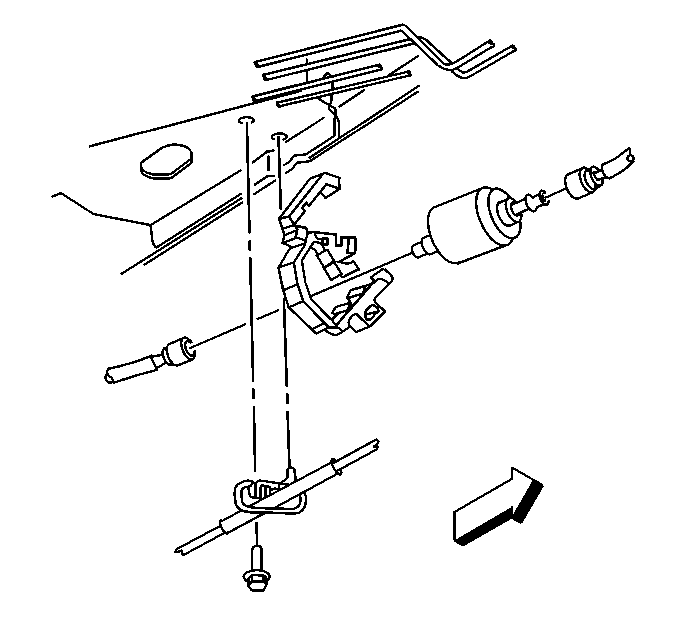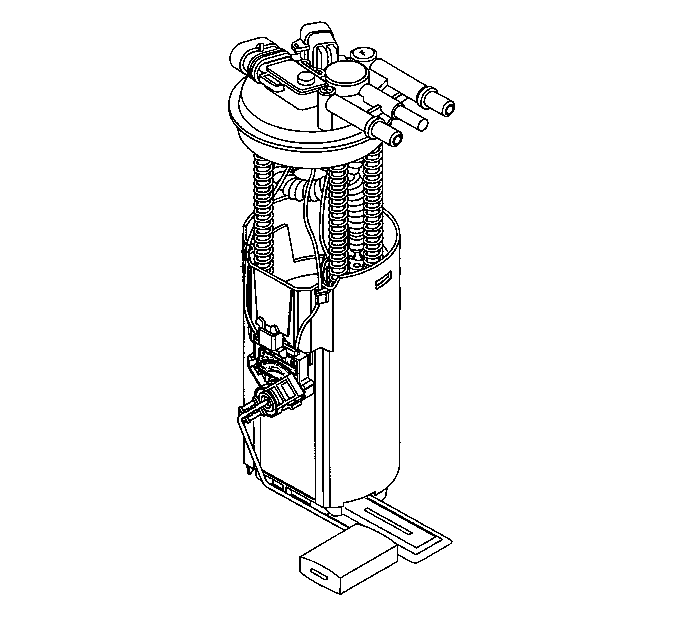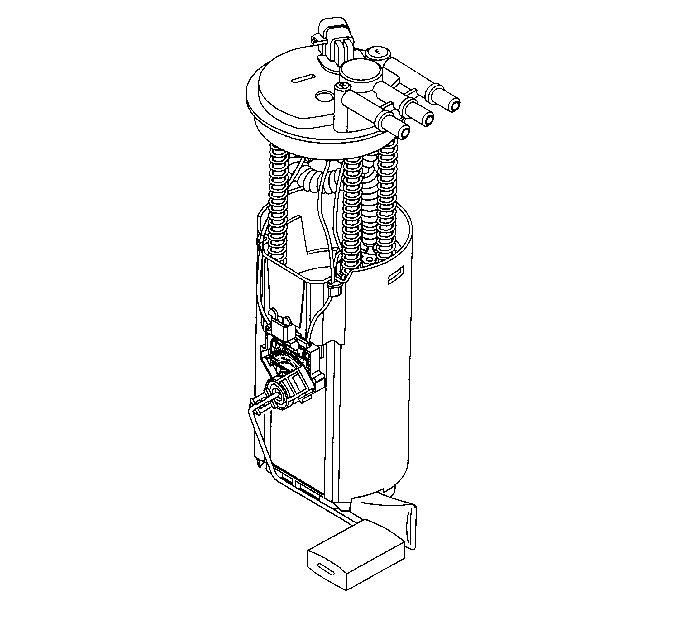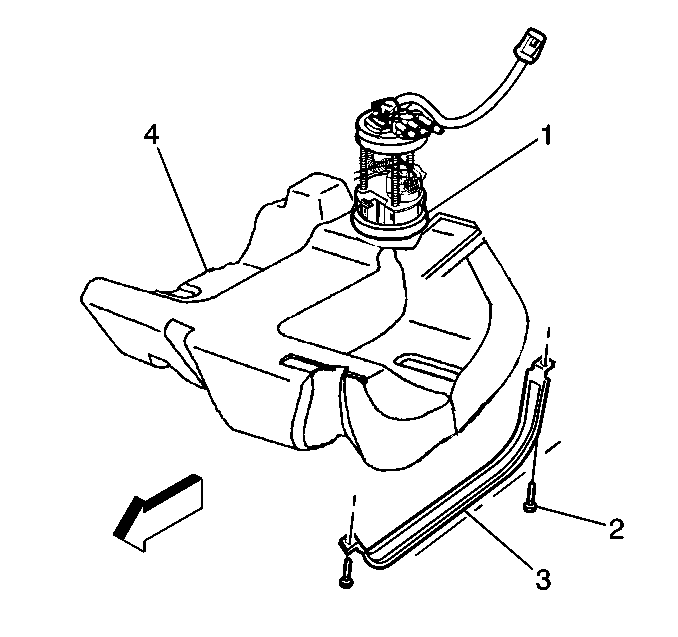Tools Required
| • | J 37088-A , Fuel
Line Quick-Connect Separator Tool Set |
| • | J 39765 , Fuel Sender
Lock Nut Wrench |
Removal Procedure
Important: The following procedure covers disassembly and inspection of the complete
fuel supply system. If the fuel system is contaminated, it can be cleaned.
The extent of fuel system contamination can usually be determined during
disassembly.
- Relieve the fuel system pressure. Refer to Fuel Pressure Relief Procedure
.

- Remove the in-line fuel
filter. Refer to
In-Line Fuel Filter Replacement
.
Important: If filter is plugged or contaminated, replace it after cleaning fuel
pipes.
- Inspect the in-line fuel filter for contamination.

- Drain fuel tank. Refer
to Fuel Tank Replacement (Draining)
.
- Remove fuel tank. Refer to
Fuel Tank Replacement
.
- Locate the tank in a suitable work area away from heat, flame,
or other source of ignition.

- Remove the modular fuel
sender assembly from the fuel tank. Refer to
Fuel Sender Assembly Replacement
.

- Inspect the fuel sender
strainer. If the strainer is contaminated, the strainer must be replaced and
the fuel tank should be cleaned.
- Inspect the fuel pump inlet for dirt and debris. If found, the
fuel sender should be replaced.
- Flush fuel tank with running hot water for at least five minutes.
- Pour the water out of fuel sender assembly opening.
- Rock the tank to be sure that removal of water from tank is complete.
Notice: Do not attempt to straighten any kinked nylon fuel lines.
Replace any kinked nylon fuel feed or return pipes in order to prevent damage
to the vehicle.

- Remove the quick-connect
fittings at the engine compartment fuel feed (2) and return pipes (3).
- Remove the EVAP (1) pipe if necessary.
Caution: Wear safety glasses when using compressed air in order to prevent eye
injury.

- Grasp both ends of the
fuel feed pipe connection and twist ¼ turn in each direction to loosen
any dirt in the quick connect fittings.

- Blow out dirt from the
quick connect fittings, using compressed air.

- Insert tool J 37088-A
into female connector, then push inward to release the male connector.

- Pull the connection apart.
- Repeat step 14 through 17 for the other fitting.
Notice: Use an emery cloth in order to remove rust or burrs from the fuel pipe.
Use a radial motion with the fuel pipe end in order to prevent damage to the
O-ring sealing surface.
- Apply air pressure to fuel pipes in the opposite direction from normal
fuel flow.
- Wipe off male pipe ends. Inspect all connectors for dirt and burrs,
using a clean shop towel.
- Clean the components/assemblies as required.
- Replace the components/assemblies as required.
Installation Procedure
Caution: Always apply a few drops of clean engine oil to the male pipe ends before
connecting the fuel pipe fittings in order to reduce the risk
of fire and personal injury. This will ensure proper reconnection and prevent
a possible fuel leak. During normal operation, the O-rings located in the
female connector will swell and may prevent proper reconnection if not lubricated.

- Apply a few drops of
clean engine oil to the male tube ends of the fuel feed and return engine
pipes.

- Connect the fuel feed
and fuel return pipe quick-connect fittings

- Push connectors together
to cause the retaining tabs/fingers to snap into place.

- Once installed, pull on
both ends of each connection to make sure they are secure.

- Install fuel sender assembly
into the fuel tank. Refer to
Fuel Sender Assembly Replacement
.

- Install the fuel filter.
Refer to
In-Line Fuel Filter Replacement
.

- Install fuel tank (4).
Refer to
Fuel Tank Replacement
.
- Install the negative battery cable. Refer to Engine Electrical.
| 8.1. | Turn ignition switch to ON for 2 seconds. |
| 8.2. | Turn the ignition switch to OFF for 5 seconds. |
| 8.3. | Turn the ignition switch ON |
| 8.4. | Check for fuel leaks. |
















